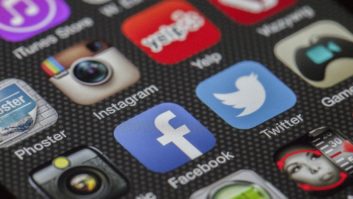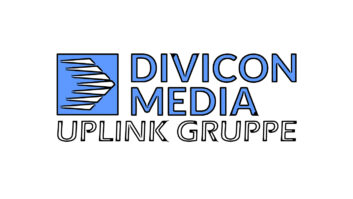
RTI’s Howard Chien. Photo courtesy RTI
TAIPEI — When Radio Taiwan International began broadcasting in 1928, there was no Internet. But times change. Today, RTI reaches its global audience via Web streaming in addition to its over-the-air shortwave radio broadcasts. As well, RTI uses social media to interact with its listeners — in all 13 of RTI’s broadcast languages.
“Currently, we at the English service use only Facebook,” said Howard Chien, RTI’s English news presenter. “We update our Facebook page every day to share the videos or pictures we talk about on our programs with the listeners. We encourage them to leave a comment so that we can include them in our programs. Also, on a program called ‘We’ve Got Mail,’ we review this precious feedback from our listeners.”

Radio Taiwan International relies on its Facebook page
to interact with RTI’s worldwide audience.
RTI isn’t alone in using social media in all its forms to connect to its listeners. So does the BBC World Service (as well as BBC Radio’s home services). “We use social media a lot,” said Bethan Jinkinson, digital editor at BBC World Service’s English Service. “It’s a very important way of getting to know our listeners.”
DIFFERENT STATIONS, APPROACHES
Unlike RTI, BBC World Service relies on a wide range of social media platforms to reach listeners. “We mainly use Facebook and Twitter, but BBC World Service is also on Google Plus, YouTube, and chat apps like WhatsApp,” said Jinkinson.
Like RTI, BBC World Service uses social media to get feedback from listeners. “We do like to hear what they think of our programs,” Jinkinson said. “Social media is also effective in letting us know how well our radio broadcasts are being received around the world. And if one of our transmitters goes off air, we can be sure to hear about it quickly from listeners on Twitter.”

BBC World Service’s Twitter page promotes programs to
listeners, while seeking their input and reception reports.
Social media has also made it possible for BBC World Service to hold live interactive broadcasts on air, without listeners paying for long distance telephone calls. “We can have experts on air and online, who take questions from our audiences via Facebook, Twitter and chat/SMS programs,” said Jinkinson. “For instance, when the Ebola crisis occurred in 2014, a panel of BBC World Service on-air reporters including Global Health Correspondent Tulip Mazumdar fielded online questions from people in Africa. Their answers included the basic facts of how Ebola is spread and treated; plus responses to listener queries such as, ‘Can I treat Ebola with herbs?’”
Singaporean FM stations Kiss92 (adult contemporary format aimed at women 35–49) and One FM 91.3 (rock AC, men 35–49) also employ a variety of social media platforms to connect to listeners and build audience loyalty. “We use our Twitter feed for ‘Now Playing’ info and ‘Breaking News,’ while our primary social engagement tool is Facebook,” said Jamie R. Meldrum, senior program director for Kiss92/One FM 91.3.
“We try to maintain an ongoing dialog with the audience on Facebook,” he explained, including posting and soliciting comments about on-air content and promotions. “We also create content and competitions specifically for Facebook users, which appear only on our Facebook page.” Both stations’ mobile apps are used for streaming on-air audio, advertising, promotions, content, and research.
To generate online buzz, Kiss92/One FM 91.3 posts information about the stations’ on-air features and “Top 5” lists before that content goes to air. The result is that by the time these features do get broadcast, “We’ve already got comments, feedback and suggestions from the audience we can use,” Muldrum said.
Blast The Radio is an Internet-only station run and hosted by Ottawa, Ontario, radio DJ John “Milky” Mielke. Launched in late 2014 after his former station CKKL(FM)/Bob FM laid off Milky and all other on-air staff during a format switch, BTR has passed the 113,000 “listens” (log on to hear the audio stream) mark.

Blast The Radio’s chat room is full of listeners swapping song
requests and quips with station owner/DJ John ‘Milky’ Mielke.
During his weekday 9 a.m. to 1 p.m. broadcasts (the station runs on auto mode the rest of the time), Milky hosts a live chat room at www.BlastThe Radio.com, where his listeners can post comments to him and each other. This live chat has created a solid fan base of BTR’s online listeners: They happily buy tickets to BTR-sponsored events such as an evening boat cruise on the city’s Ottawa River.
“If someone had sat me down in December and said, ‘So, Do you want a chat room on your station?’ I would have laughed and told them that 1997 called and wanted their ICQ [chat room software] back,” said Milky. “But it is here, in the chat, where BlastTheRadio.com has truly found its purpose and its heart. It is here that the community that is BTR has formed. If it weren’t for the chat, I don’t think we’d be nearly as successful as we have been.”
Canada’s CFRI 104.7/2day FM in Grande Prairie, Alberta, also has a real-time community of fans hosted on the station’s Commotion app. “This app allows us to instantly communicate with our listeners and have them interact with each other, all in one place,” said Evan Degenhardt, CFRI’s program director and morning show host. As well, the Commotion app lets station personnel and fans send texts; share audio and pictures and take part in contests.
“Our Facebook and Twitter accounts tie into the app, so we have multiple platforms of interactivity all streaming into one place,” Degenhardt said. “The Commotion app also allows our listeners to stream 2day FM from their smartphone or tablet from anywhere in the world. It’s a powerful tool that gives us an instant connection to our listeners, and vice-versa.”
REAL PAYOFFS
The positive results delivered by CFRI’s Commotion app mirror the chat room benefits experienced by Blast The Radio. In the same vein, RTI and Kiss92/One FM 91.3.
“I believe social media is a very effective way to interact with the listeners as we do not have live call-in sessions to talk to them during the programs,” said RTI’s Chien. “We’re looking to expand our listener base to more English listeners living here in Taiwan with the help of social websites.”

Singapore’s Kiss92 and One FM 91.3 use many social media platforms, but Facebook is their go-to page.
Kiss92/One FM 91.3 tested the power of its social media reach — notably the stations’ mobile app — by giving away a car exclusively through this platform. Every hour, the stations’ briefly posted a picture of the car on the app. Listeners then had a limited time after it appeared to answer a question about the vehicle and register to win it.
“We saw a great spike in our streaming numbers during the course of this campaign,” said Meldrum. “Over four weeks we took in just under 20,000 unique entries.”
As for the BBC World Service? The fact that the Facebook page of its global English output has over 3.3 million “Likes,” and its Twitter feed 222,000 followers, speaks to how popular BBC World Service’s social media outreach is with listeners around the world. “India is among our largest membership English-language groups on Facebook page,” said Jinkinson. “This tells us not only how well BBC World Service is reaching people via the Web, but also how it keeps us in touch with our audiences, many of them younger, with different habits of consuming news and information.
The bottom line is that social media in all its forms delivers results for radio broadcasters, from one-man-bands like Blast The Radio to established international broadcasters like the BBC World Service. Other broadcasters not exploiting social media to the fullest would be wise to take heed.
James Careless reports on the industry for Radio World from Ottawa, Ontario.












